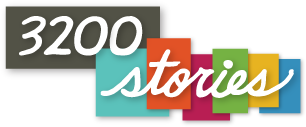Tuesday afternoon I reached Max R. Garcia on the phone. How was he feeling, I asked.
“I’m alive!” he quickly responded.
Max's enthusiasm and passion for life are consistent with the attitudes of many of the survivors with whom I have the pleasure to work as Director of Education at the JFCS Holocaust Center . After surviving life in hiding, slave labor at Auschwitz and Mauthausen, and on the death marches, he immigrated to the United States
“We spent 10 days on that dumb ocean; in that bathtub, oh was I sick," he recalled. "I stood there in the middle of the ocean on the railing just throwing up… saying to myself, ‘I survived Auschwitz to die on this ocean?’ … We woke up the next morning, and it was an incredible sight. There was a mist hanging, and you could see the Chrysler Building. It was like coming into paradise for me … I wound up in New York City. Incredible! It was the 30th of September 1946.”

I have had the great opportunity to learn from Max on his regular visits to the Holocaust Center when he shares the institutional history with me. As one of the founders of the original center, Max remembers when Earl Raab, former Executive Director of the Jewish Community Relations Council, approached him to be in charge of starting the Holocaust library.
“Why me? I don’t know anything about books,” Max responded.
“You’ll learn, and there isn’t anybody else here [other survivors] who speak English, and you’re an architect: you know how to plan ahead,” Raab replied.
But founding the original Holocaust Center in 1979 (now part of Jewish Family and Children’s Services) was just the beginning of Max’s passion for Holocaust education. In January of 1997, Max recorded his oral history with the USC Shoah Foundation. In just under four hours, Max articulately shared his childhood, Holocaust experience, and adult life in the United States. Max’s testimony is one of 52,000 video testimonies that have been collected by Shoah.
The JFCS Holocaust Center is thrilled to be working in partnership with Shoah on several different projects. The JFCS Holocaust Center’s 1,400 Bay Area testimonies are the first outside collection to be digitized, indexed, and incorporated into Shoah’s Visual History Archive in 2015.
One project honors the particular importance and challenge of bringing these testimonies into clear focus for the younger generation. It achieves this through the active and often interactive medium of film.

For the past 10 weeks, Robert Blatman, a junior at Lick-Wilmerding High School and current Manovill Holocaust History Fellow with the JFCS Holocaust Center, has been working with Max’s video testimony, viewing it repeatedly and honing it down into a precious nugget of remembrance. Just last week, he completed his eight-minute documentary inspired by Garcia's testimony, Adaptability During Adversity.
“Max always sees the good in bad situations … he has great perseverance,” Robert reflects.
Using IWitness, a web-based video editing software of the USC Shoah Foundation, Robert selected clips from Max’s testimony, incorporated historic images, and narrated the film with text, slides and music. Robert, together with his seven colleagues (high school students from throughout the Bay Area selected for the Manovill Fellowship), used the sources in the Tauber Holocaust Library for preliminary research on Max’s life and met several times a month to review each other’s films about different survivors and liberators.
“I hope my film will be used to teach my peers," Robert reflected upon completion of the film. "I plan to show it at school. I hope that it will serve as a reference for those researching the life of Max, as well as a first-hand experience of the Holocaust.”
Robert had been researching and studying the life of Max for weeks before they had the chance to meet on March 10, at the book launch of the Diary of Rywka Lipszyc.
“It was so great to meet Max in person! He was upbeat and fascinating,” said Robert.
Primary resources are our number one asset when teaching the Holocaust. The opportunity to hear first-hand testimony from a survivor and engage with him or her in a conversation is a teaching opportunity we will never be able to replicate. However, we must continue to be creative and inspired by those who survived.
Beyond their lifetime, the voices of survivors will continue in our lessons of the Holocaust. Precious resources like the Diary of Rywka Lipszyc (recently published by the JFCS Holocaust Center in partnership with Lehrhaus Judaica) and video testimony have already been introduced in our classrooms and will be the foundation of Holocaust education in the future.
Max R. Garcia is one of four survivors sharing their testimonies as part of the San Francisco Yom HaShoah Commemoration at 1:30 p.m. on Sunday, April 27, at the Jewish Community Center of San Francisco. It is presented by the JFCS Holocaust Center, Lehrhaus Judaica, Jewish Community Center of San Francisco, and Jewish Community Relations Council.
Feature image used under the Creative Commons Attribution-Noncommercial License 2.0. Attribution: by Ian Duffy. SLightly cropped.

